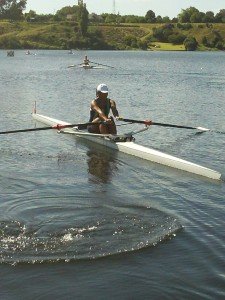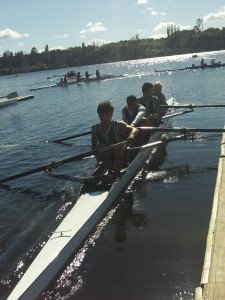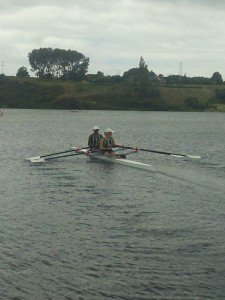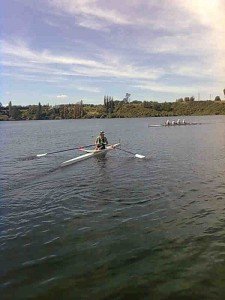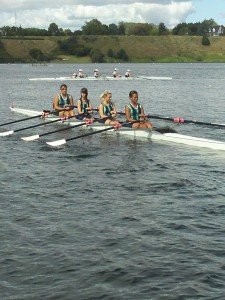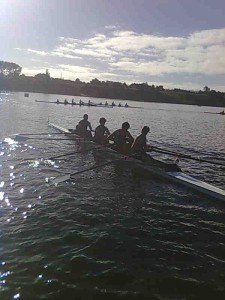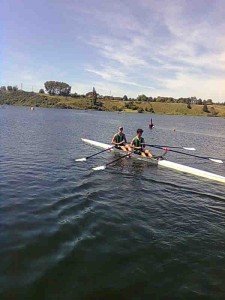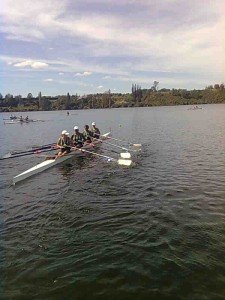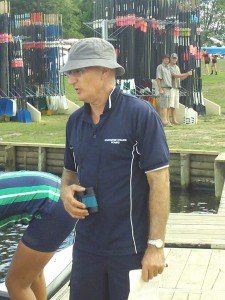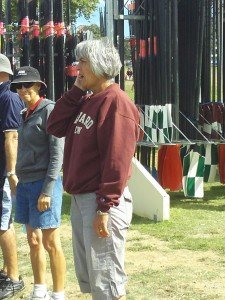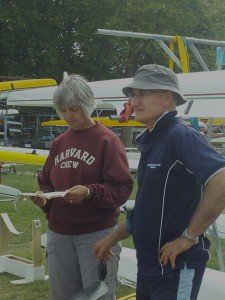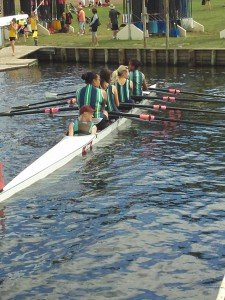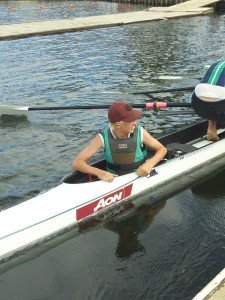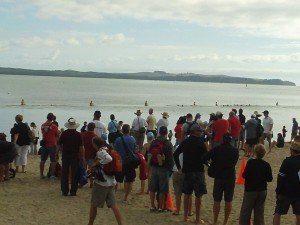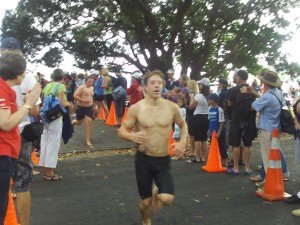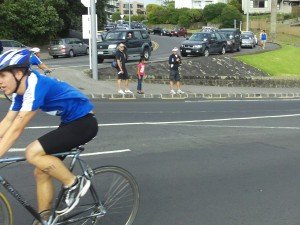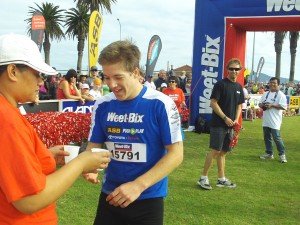Respiratory System
The 2 primary purposes of respiration are to provide our bodies with oxygen and to remove carbon dioxide. This process makes life possible (along with a few other things). We could not live more than a few minutes without oxygen. A lesser-known but almost equally important function of respiration is to regulate the acid-base balance of the blood (this becomes important later when we learn the role acidosis plays in fatiguing).
The respiratory system consists of the lungs and a set of branching tubes that transport air and oxygen from outside the body to the bloodstream. During inhalation we take air from the outside into the mouth and nose, down the pharynx or throat, and into each lung by means of two large tubes called the bronchi. Within the lungs air travels through an ever smaller system of branching tubes called bronchioles until these finally end as small sacs called alveoli. Capillaries surround the alveoli.
The inhalation phase of respiration allows us to take in oxygen as a component of the air that comes into our bodies. Some of that oxygen remains in our bodies when we exhale the air. With the air we expel during the exhalation phase, we also expel carbon dioxide and some water vapor that our bodies produced.
We take in air through the nose and mouth. It travels down the pharynx through the bronchi, the bronchioles, and lastly to the alveoli, where it inflates these small elastic sacs. From there, some of the oxygen in that air diffuses from the alveoli into the bloodstream by way of the pulmonary capillaries. At the same time, carbon dioxide produced in the muscles diffuses in the opposite direction, that is, out of the capillaries and into the alveoli. The carbon dioxide is then transported through the bronchioles and finally exhaled into the air from the nose and mouth.
The term for the amount of air exchanged per breath is the tidal volume. The amount of air exchanged per minute is termed the minute volume. Average tidal volume is between 500 and 700 ml of air per breath, and we breath 12 to 15 times per minute. The average minute volume is thus 6 to 10 L of air.
Oxygen Consumption and Athletic Performance
Oxygen consumption refers to the amount of oxygen used during exercise. That amount is equal to the amount of oxygen taken in during exercise minus the amount exhaled, usually expressed as litres per minute.
The amount of oxygen used by the muscles each minute will be directly related to the intensity of the exercise until a maximum rate is reached. That maximum rate will be between 2 and 3L per minute for average nonathletic females and males, respectively. The rate can be as high as 4 to 6 L per minute for female and male endurance athletes. The term for the maximum amount of oxygen that a person can take in during 1 min of exercise is maximal oxygen consumption, more commonly referred to as VO2max. Values for VO2max are a direct expression of a person’s ability to supply energy for muscular contraction through aerobic metabolism.
Maximal Oxygen Consumption
We calculate maximal oxygen consumption, VO2max, by measuring oxygen consumption during repeated intervals of exercise at progressively faster speeds until the athlete reaches a plateau where a further increase of speed does not cause an increase in oxygen consumption. When that happens, the athlete has reached his or her maximum ability to consume oxygen.
One aspect of VO2max difficult for many people to understand is that athletes will reach it when they are exercising slower than their maximum speed. Athletes can continue to increase their speed even after they have reached their maximum ability to consume oxygen because of their capacity for anaerobic metabolism. Anaerobic capacity makes it possible for them to continue supplying energy to their muscles even though not enough oxygen is available to metabolize the chemical sources of that energy. They will only be able to this for a short time however because the chemicals that were not completely metabolized, principally lactic acid and more specifically the hydrogen ions in that compound, will accumulate in the muscles and change their pH from neutral to acidic, which will slow the speed and force of muscular contraction and in the process slow the swimming (running/cycling etc) speed.
During submaximal exercise, oxygen consumption will increase from its resting rate of around 0.25 L per min to some level that will sustain the contractile energy needed by the muscles. It will usually take between 1 and 3 minutes to reach this level of increased oxygen consumption. An oxygen deficit occurs during this period of adjustment. The oxygen deficit represents the oxygen that was needed but not available during the first few minutes of exercise. The athlete can repay the deficit during the remainder of the exercise if the intensity of work is low. To repay the deficit, the body can make available for a short time more oxygen than it needs to provide energy for work. The amount of oxygen consumed during the exercise period plus the oxygen deficit is termed the oxygen requirement for the task at hand.
If the demand for oxygen exceeds the amount that the athlete can repay during exercise, it will continue to build. The athlete will repay it after exercise by maintaining a high level of oxygen consumption for a short period. This period of additional oxygen consumption after exercise has become known as the oxygen debt. Although this term is in common use by members of the sporting community, it has become obsolete in the scientific community because sophisticated evaluation techniques have shown that the increased consumption of oxygen after exercise does not correspond directly to the oxygen deficit that occurred in the first few minutes of exercise.
New thoughts on oxygen debt
We now understand that the extra oxygen consumed after exercise does not entirely represent the repayment of a debt incurred during the exercise (we tend to take in more extra oxygen than what we owe). For this reason, scientists have suggested other terms for the additional oxygen consumed during recovery. One of these terms is excess post-exercise oxygen consumption (EPOC).
Typically, recovery oxygen uptake has fast and slow components. About half of the total amount of excess oxygen consumed during recovery will take place within 30 sec to 3 min after completion of the exercise, depending on the length and intensity of the exercise. This portion is termed the fast component for obvious reasons. The slow portion of recovery oxygen uptake refers to the slightly elevated breathing rate that can continue for several minutes or even several hours after exercise. One explanation is that the additional oxygen is probably used to metabolize the lactic acid produced during exercise. Another is that an increase of body temperature keeps the respiration rate elevated.
